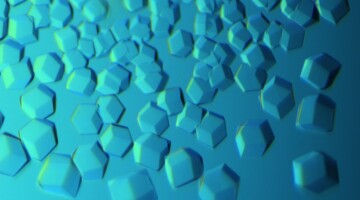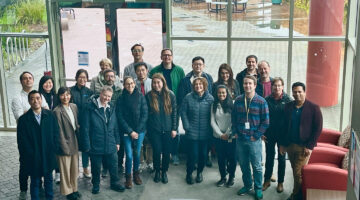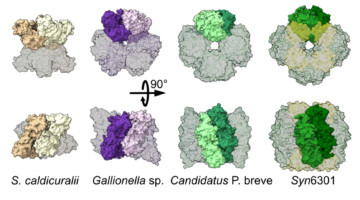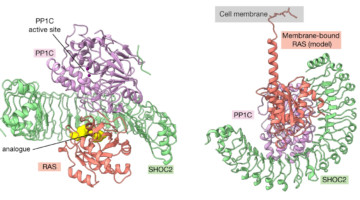Using a computer-based approach, researchers designed porous protein crystals that were revealed to be stable, tunable, and atomically accurate using x-ray scattering and diffraction at the ALS. The work provides a powerful new platform for biological materials engineering and opens up wide applications in biotechnology and medicine. Read more »![]()
![]()
How Structure Affects the Activity of Lipid Nanoparticles
Berkeley Lab and Genentech scientists related the internal structures of lipid nanoparticles to their efficacy at drug delivery, using a combination of methods including x-ray scattering at the ALS. The work promises to expedite the development of drug delivery systems for the treatment of diseases such as COVID-19 and cancer. Read more »![]()
![]()
Precisely patterned nanofibres made from extendable protein multiplexes
Superhelical symmetry can be found in helical repeat proteins, and de novo helical repeat proteins are rigid and amenable to stacking in a head-to-tail fashion, which is an important factor in building up coincident symmetries. Now, using cyclic helical repeat proteins, Baker and colleagues generate protein nanostructures—as depicted on the cover—with coincident cyclic and superhelical symmetry axes. Read more »
Controlling the Structure and Morphology of Organic Nanofilaments Using External Stimuli
Coexisting organic helical and helicoidal crystalline nanofilaments formed by molecules with a bent molecular shape can now be transformed to a smectic liquid crystal phase or only helical nanofilaments by applying an electric field or irradiating the sample with UV light. Read more »
Breaking Barriers in Drug Delivery with Better Lipid Nanoparticles
A collaboration between Berkeley Lab and Genentech, a member of the Roche Group, is working to break through some of the drug delivery bottlenecks by designing the most effective lipid nanoparticles (LNPs)—tiny spherical pouches made of fatty molecules that encapsulate therapeutic agents until they dock with cell membranes and release their contents. Read more »
Plant Enzyme Builds Polymers That Fortify Cell Walls
With data obtained at the ALS, researchers gained insight into how an enzyme orchestrates the synthesis of a pectin polymer that imparts strength and flexibility to plant cell walls. The work could lead to improved biofuel production and guide the design of polymers with tailored functionalities for industrial or biomedical applications. Read more »![]()
![]()
Electric Vehicle Batteries Could Get Big Boost With New Polymer Coating
Scientists have developed a conductive polymer coating—called HOS-PFM—that conducts both electrons and ions at the same time. This ensures battery stability and high charge/discharge rates while enhancing battery life. The coating also shows promise as a battery adhesive that could extend the lifetime of a lithium-ion battery from an average of 10 years to about 15 years. Read more »
Distinguishing Nanoparticles from Gas-Phase Species in Reacting Flows
Researchers developed a strategy for distinguishing between gas-phase species and newly formed nanoparticles in mixed gas- and particle-phase reacting flows. The approach uses small-angle x-ray scattering to study particle formation as it occurs by explicitly accounting for temperature-dependent scattering from gases. Read more »![]()
Protein Assemblies Show Surprising Variability
Protein-structure studies performed in part at the ALS helped researchers discover that the protein assemblies in a key carbon-cycling enzyme can rearrange with surprising ease. The findings raise the prospect of genetically tuning the protein in agricultural plant species to produce more productive and resource-efficient crops. Read more »![]()
![]()
Structures Signal Fresh Targets for Anticancer Drugs
Researchers from Genentech used a suite of methods, including small-angle x-ray scattering, to learn how an assembly of three proteins works together to transmit signals for cell division. The work reveals new targets for the development of drugs that fight certain types of cancer, including lung, colorectal, and pancreatic cancer. Read more »![]()
![]()
- « Previous Page
- 1
- 2
- 3
- 4
- …
- 8
- Next Page »









